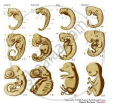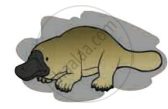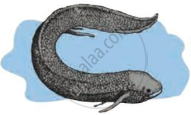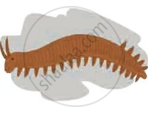Advertisements
Advertisements
प्रश्न
Give scientific reason.
Duck-billed platypus shows relationship with mammals.
उत्तर
- The duck-billed platypus is a connecting link between mammals and reptiles.
- It shows similarity with mammals due to the presence of mammary glands and hairs.
Therefore, Duck-billed platypus shows relationship with mammals.
संबंधित प्रश्न
(a) Select the homologous structures from the combinations given below:
(i) Forelimbs of whales and bats
(ii) Tuber of potato and sweet potato
(iii) Eyes of octopus and mammals
(iv) Thorns of Bougainvillea and tendrils of Cucurbita
(b) State the kind of evolution they represent.
Which of the following is a correct set of homologous organs?
(a) Forelimbs of frog, bird and lizard
(b) Spine of cactus and thorn of bougainvillea
(c) Wings of bat and wings of butterfly
(d) Wings of a bird and wings of a bat
Explain the terms analogous and homologous organs with examples.
Explain with an example for the given, how the following provides evidence in favor of evolution in organisms :
Fossils
Name the scientists who Discovered the fossil of Australopithecus
Explain the evolution of giraffe's neck according to Lamarck's theory of evolution.
How do homologous organs help in providing evidence for organic evolution?
Human tailbone is a vestigial organ. Explain.
The organs which perform different functions but have the same basic structure are known as :
(a) homologous organs
(b) analogous organs
(c) homolytic organs
(d) analytic organs
The organs which perform similar functions but have different basic structure are called :
(a) asymmetric organs
(b) analogous organs
(c) homologous organs
(d) homophonic organs
The organs P and Q of two animals have different structures but similar functions. On the other hand, the two organs R and S of two other animals have the same basic structure but different functions.
(a) What are the organs like P and Q known as?
(b) Name the organs like P and Q. Also name the animals which have such organs.
(c) What are the organs like R and S called?
(d) Name the organs like R and S. Also name the animals which have such organs.
Write short notes based upon the information known to you.
Embryology
Observe the picture and answer the following questions.
A) Which evidence of evolution is shown in the picture?
B) What can be proven with this proof?
C) Give one more example of evidence of evolution
Define fossil.
Differentiate between connecting links and the missing links.
Very short answer question.
What are homologous organs?
Long answer question.
Would you consider wings of butterfly and bat as homologous or analogous and why?
Find an odd one out.
I am a connecting link between reptiles and mammals. Who am I?
The decaying process of C-14 occurs continuously in dead organisms only.
Observe the given images and answer the following questions.

- Which evolutionary evidence does it indicate?
- What does it prove?
- State another example of evolutionary evidence.
Which evidence of evolution is shown in the given picture? Explain the importance of this evidence.

Write the answers to the questions by observing the figure below.
 |
 |
 |
| (a) | (b) | (c) |
- Write the name of the animal ‘(a)’ in the figure.
- Write the name of the animal ‘(b)’ in the figure.
- Write the name of the animal ‘(c)’ in the figure.
- Which evolutionary evidence is illustrated by this figure?
- Write the definition of that evidence for evolution.
The degenerated and non-functional organs found in an organism are called ______.
How do you differentiate homologous organs from analogous organs?
Basic principles of embryonic development were pronounced by:
The presence of gill slits, in the embryos of all vertebrates, supports the theory of ______.
Fossils are generally found in ______.
Did aquatic life forms get fossilised? If, yes where do we come across such fossils?
The evolutionary story of moths in England during industrialisation reveals, that 'evolution is apparently reversible'. Clarify this statement.
You have studied the story of Pepper moths in England. Had the industries been removed, what impact could it have on the moth population? Discuss.
What is the function of the appendix of our digestive system?
Evolutionary convergence is the development of a ______.
Write a note on the significance of Palaeontology.
Pick the odd man out:
